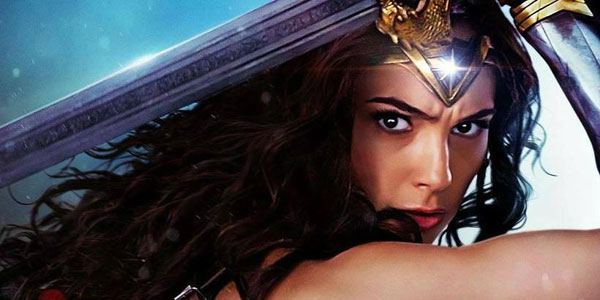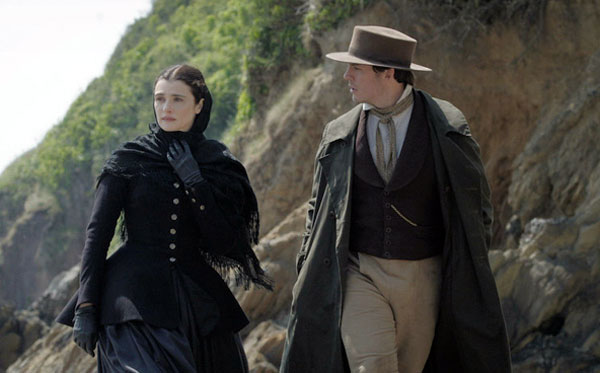|
Wonder Woman was the first female superhero, appearing initially in 1941, three years after Superman and two years after Batman. She was
unfairly held back behind her DC Comics cohorts in TV and movies, however. The Wonder Woman series starring Lynda Carter premiered in 1975, nine years after the Batman series starring Adam West and 23 years after the Superman series starring George Reeves.
Now, in 2017, the first Wonder Woman movie has appeared. This compares with 10 Superman feature films made since 1951, not
counting earlier serials and cartoon shorts. The sexism is readily apparent, and has already been noted by just about every writer who has reviewed Wonder Woman. But
meanwhile we can be thankful that Wonder Woman—not incidentally directed by Patty Jenkins, the first woman to direct a superhero movie—is one of the very best of
its genre.
 |
Jenkins and screenwriters Allan Heinberg, Zach Snyder and Jason Fuchs do a terrific job in setting up the Wonder Woman
creation myth, providing just enough detail without overloading the story. We meet Princess Diana (Gal Gadot) in her home on
the all-women Aegean island of Themyscira. Diana is the daughter of Zeus and Queen Hippolyta (Connie Nielsen), being
trained as a warrior by her aunt General Antiope (Robin Wright) against her mother’s wishes. However, Diana’s training comes in
handy when World War I unceremoniously comes to Themyscira, in the form of a German battleship. Diana and the other women
dispatch the Germans, but at a heavy price to themselves.
Diana and the remaining women interrogate rescued American flyer Steve Trevor (Chris Pine). Bound in the Lasso of Truth,
Trevor is forced to reveal that he is a spy and that he has stolen the notebook of Isabel Maru (Elena Anaya), a diabolical chemist
in the service of the Germans. Under the orders of evil General Ludendorff (Danny Huston), Maru has developed a particularly
deadly type of mustard gas that will kill millions of Allied soldiers unless the gas factory can be found and destroyed in time.
Hearing Trevor’s story, Diana becomes convinced that Ludendorff is really her half-brother Ares, who killed all the other
Olympian gods and has spread war and pestilence across the world ever since. When Trevor goes back to the war, Diana
insists on going with him, to kill Ares and end the fighting forever.
This is the setup for a slam-bang story filled with as many CGI-created battles as any loyal DC Comics fan could wish. The final
battle between Wonder Woman and Ares might go on too long, but it is spectacular, and it’s what the true fans paid to see.
Even better, Gal Gadot makes a smashing Wonder Woman (both literally and figuratively), and she and Pine have fantastic
chemistry together. The supporting characters are unusually sharply drawn and played for a superhero movie, including Said
Taghmaoui as rascally agent Sameer, Ewen Bremner as drunken sharpshooter Charlie, Eugene Brave Rock as mysterious Chief
Napi, Lucy Davis as the endearing Etta Candy, and David Thewlis as a character best not revealed here.
Some commentators have complained about the lack of feminist themes in the film that were abundant in the original 1940s comic. The Secret History of Wonder Woman, Jill Lepore’s 2014 book,
tells that story, and quite a story it is. William Moulton Marston, Wonder Woman’s creator, was—as Katha Pollitt describes him in
her review of Lepore’s book—“equal parts genius, charlatan, and kinkster.” Inventor of the polygraph—his own Lasso of
Truth—Marston preached women’s rights while openly cohabiting with his wife, Elizabeth Holloway, and his mistress,
Olive Byrne. (Holloway and Byrne had considerable input into the creation of Wonder Woman; Lepore was the first to reveal this.)
Marston’s story is far too packed with incident to describe in detail here. But despite downplaying feminism, Wonder Woman is a good yarn. As written and played here, Wonder Woman is
the most likable hero of the DC Comics pantheon. Filled with idealism that she can rid the world of evil, she swoons over every
baby she sees (there are none on Themyscira). Her experiences in World War I bring unexpected tragedy (some of it unexpected
for us, too). She ends the movie sadder and wiser, but with her optimism intact, ready to fly off to her next adventure, which
Patty Jenkins has already been signed to direct.
A darker tale of a woman confronting a world of men is told in Roger Michell’s My Cousin Rachel, the second film adaptation of
Daphne Du Maurier’s novel about a naïve young man repelled and enraptured in equal measure by his uncle’s widow.
Set somewhere in the early 1800s, My Cousin Rachel tells the story of Philip (Sam Claflin), who has been raised from early
childhood on his Uncle Ambrose’s estate in Cornwall. By his own admission, Philip has never wanted anything except to stay on
the estate forever. The opposite of Themyscira, Ambrose’s estate is a male bastion. “The only females on the estate were the dogs,”
Philip says at the beginning of the film.
 |
When Philip is in his early twenties, Ambrose develops a serious illness and must go to Italy to recuperate. In a series of letters to
Philip, Ambrose tells of his meeting their distant cousin Rachel (Rachel Weisz), the widow of an Italian count. Ambrose’s letters
grow ever more besotted as he describes his growing love for Rachel and, finally, his bliss at marrying her. Almost
immediately, however, Ambrose’s letters turn bitter and paranoid, finally accusing Rachel of plotting to kill him. Alarmed,
Philip travels to Italy, where he is informed by the sinister lawyer Rainaldi (Pierfrancesco Favino) that Ambrose is dead and that Rachel has departed for an unknown destination.
Returning to England, Philip swears vengeance on the woman who killed his uncle. His resolve, however, softens when Rachel
appears at the estate. She is beautiful, charming, soft-spoken—in a word, alluring.
The rest of My Cousin Rachel is the story of Rachel and Philip’s
love-hate relationship. Philip quickly falls for Rachel, but is never certain if she returns his love or even wishes him well. It would
take a far more experienced man than Philip to read Rachel, who goes from affection to rage and back without warning, and whose
precipitate actions keep Philip in a constant quandary.
The story proceeds to a tragic ending that, to put it mildly, solves
none of the mystery. Du Maurier’s story can be read as a symbol of the eternal incomprehension between men and women, or
even of the impossibility of understanding any other human soul in a hostile universe. It certainly is a believable tale of how
distrust and paranoia can fester, whether justified or not.
Michell’s film generally does justice to the story. The pace slackens from time to time, but when Weisz and Claflin are on
screen together, the film is riveting. Weisz burns a hole through the screen, so intense is her performance. Claflin perfectly
captures Philip’s callow egotism, making it plain that he never had a chance against this inscrutable woman who might have been angel, monster, or anything in between.
I wish Michell had kept the hanged man, a powerful motif at the beginning of both Du Maurier’s novel and the original movie,
starring Olivia de Havilland and Richard Burton in his first film role. Nevertheless, the new My Cousin Rachel features fine
performances, and it’s also beautiful to look at, thanks to the photography of Mike Eley, the production design of Alice
Normington, and the costumes of Dinah Collin. Filmed at Antony House in Cornwall—the estate which contains the portrait that
inspired Du Maurier to write the novel—My Cousin Rachel is a good choice for anyone with a taste for Gothic romance.
|